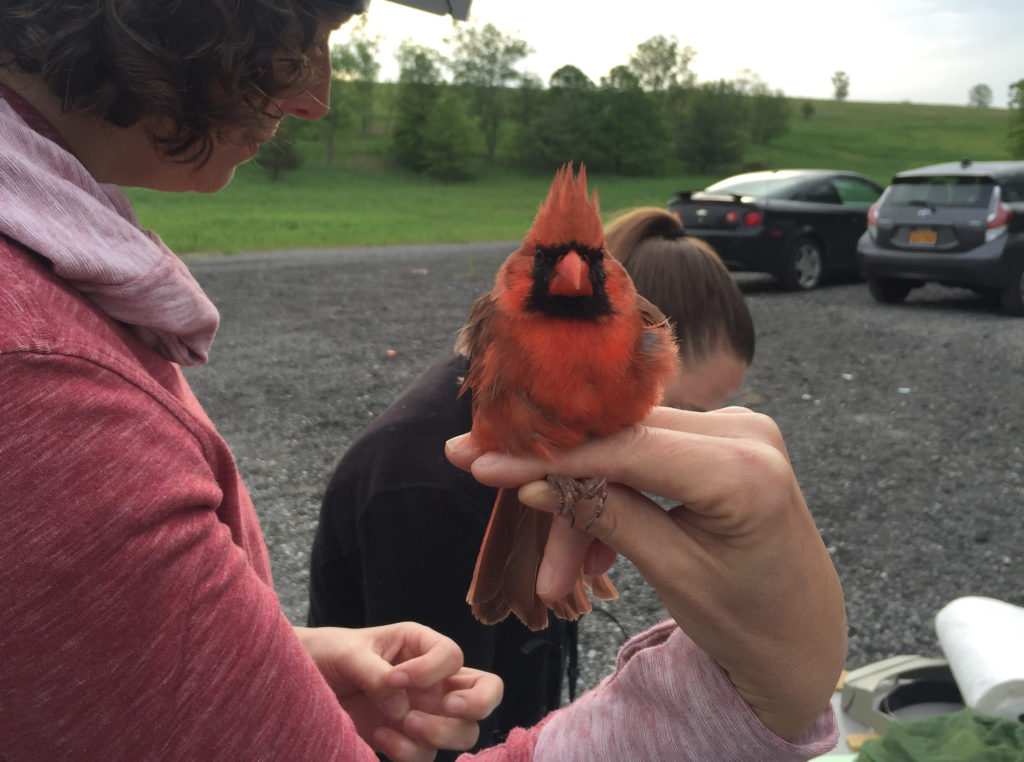The Value of Research in Reclaimed Urban Spaces

At five o’clock in the morning, a team of researchers enter Freshkills Park, passing flare stations and winding through the roads that border the park’s rolling hills to get to their workstation. The sun is just beginning to break as they unfurl their mist nets in an opening in a stand of trees and set up a table with tiny metal bands, clamps, clipboards, scales, rulers, and pencils. Shortly thereafter the work begins.
Birds out for their morning foraging are unable to see the threadlike nets draped through the woods, and they are plucked from flight and cradled in the folds of the nets. Researchers quickly retrieve them and then perform the delicate operation of removing the birds from the net before taking them back to the workstation. There they take a variety of measurements including the bird’s weight, wing size and beak size. Before release, each bird is given a tiny silver bracelet that has a unique code. All of these data will be entered into an international database, and if the bird happens to be recaptured by researchers anywhere in the future the information collected at Freshkills Park will be available to them. The same process unfolds on a regular basis throughout the summer months, adding to the body of knowledge of Staten Island’s ecosystems.
This bird banding study led by researchers from the College of Staten Island is one of the many research projects being conducted at Freshkills Park. It’s not possible to restore the former landfill to its previous ecological state, but the landscape’s transformation into parkland is adding ecological functions to the region that benefit both people and wildlife. From looking at turtle populations, to grassland ecology, to social science studies, there are over 20 different current and past research projects based onsite. These projects track the establishment of ecological communities throughout the park while also informing how the site is managed.
Such projects are happening in places across New York City and throughout urban areas all over the globe. In “What Should Grow in a Vacant Lot?” CityLab looks at how an ecologist in Baltimore is cultivating and examining vacant lots in the city as a way to study how these spaces can be revitalized. As cities become more populated, existing open spaces are called upon to serve the communities that surround them while also providing ecosystem services such as storm water retention, air and water filtration, and microclimate regulation.
A deep understanding of the ecologies of urban open spaces is needed to maintain this variety of services, but heavily used urban spaces provide challenges to research. Imagine bird research occurring on the Great Lawn in Central Park, amid Frisbee players, kite flyers, and families picnicking – the conditions are less than ideal. This is where the importance and utility of urban spaces that are currently being developed, such as Freshkills Park, have an important role to play. In depth, long term research can occur undisturbed at these sites. The information gathered can then be used to develop management strategies and inform public space development. For this reason it is important to share research and management plans across the city, to further the combined knowledge.
As cities face environmental challenges, research can reach diverse solutions to increasingly varied issues. Through understanding the ecology of our urban spaces, we are able to formulate management strategies for the landscape that benefit both the natural world and the communities surrounding these open spaces.




